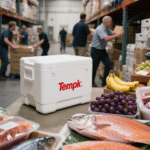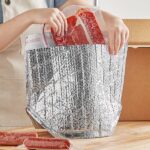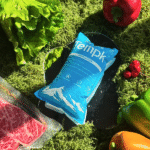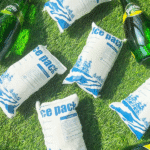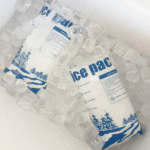How to choose a dry ice supplier & pack sheet in 2025?
Tu veux un fournisseur de glace carbonique that cuts claims, holds temperature, and scales on peak days. Pair it with the right dry ice pack sheet and you’ll reduce cost per order while staying compliant. Expect consistent CO₂ purity, fast replenishment, and packaging that matches your lanes—not the other way around. We’ll give you scorecards, quick sizing math, et 2025 trends you can use today.
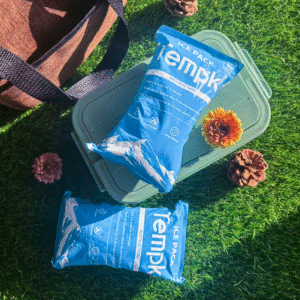
-
How do you vet a dry ice supplier fast?
-
When should you choose a dry ice pack sheet?
-
How much cooling media do you need?
-
What must you label in 2025?
What should you expect from a dry ice supplier in 2025?
Shortlist suppliers by CO₂ purity, capacité de production, and delivery reach; then check sustainability and SOPs. Your dry ice supplier should document food-grade CO₂, provide ISO or equivalent certificates, and offer regional or national coverage with weekend production. Ask about CO₂ recovery or recycling to support sustainability targets.
Pourquoi ça compte pour toi: higher purity reduces product risk; bigger networks lower dwell; greener sourcing aligns with audits. Use the scorecard below on your next vendor call. For multi-DC footprints, verify cut-off times and emergency replenishment, not just base lead time. Case data shows defect reduction after switching to higher-purity supply and shorter local hauls.
How to evaluate a dry ice supplier quickly
| Facteur | Que demander | Ce que cela signifie pour vous |
|---|---|---|
| Pureté du CO₂ (≈99.9%) | Certificats, batch testing | Lower contamination risk for food/biopharma |
| Production capacity | Tons/day, weekend shifts | Reliability during peak and disruptions |
| Delivery network | Regional vs national | Faster replenishment, lower freight |
| Durabilité | CO₂ reclaim or recovery | Lower footprint, better ESG reporting |
| Services | Kitting, pre-charged shippers | Fewer touches and faster pack-outs |
Practical tips for your team
-
Ask for certificates and keep them in your SOP binder.
-
Confirm logistics reach to every DC and overflow site.
-
Require sustainability options such as CO₂ recovery or reusable assets.
Vraie cas: A regional food shipper cut product loss by 15% after moving to higher-purity CO₂ and closer deliveries.
Dry ice pack sheet vs dry ice supplier options: Ce qui correspond à votre voie?
Use a dry ice pack sheet for 2–8 °C and indoor handling; use solid CO₂ for deep-frozen lanes. “Dry ice pack sheet” usually means a self-hydrating gel pad you soak and freeze. It’s safer in vans and rooms, easier for returns, and great for chilled windows. Solid CO₂ is colder and better for –20 °C to –70 °C needs.
For meal kits, laitier, and last-mile groceries, gel sheets hold temperature without CO₂ build-up. For frozen foods and ultra-low-temp biologics, dry ice delivers maximum cooling per kilogram. Many shippers blend both to avoid cold spots and reduce over-freezing of delicate SKUs.
Pick the right pack sheet type for the job
| Taper | Durée de refroidissement | Meilleure utilisation | What You Get |
|---|---|---|---|
| Standard sheet | ~ 24 h | Livraison de nourriture, commerce électronique | Faible coût, manipulation facile |
| Extended sheet | ~ 48 h | Biopharma, longer dwell | Détenir plus, fewer refreezes |
| Reusable sheet | Multi-cycle | Eco-focused programs | Coût moindre par expédition |
Conseils de manutention: hydrate only what you need, congeler à plat, use liners to manage condensation, and add a paper interleaf for chocolate or produce to avoid cold scuffing.
Résultat sur le terrain: A seafood brand switched to a hybrid load (40% less dry ice plus gel sheets) and cut claims by 22% while eliminating hub CO₂ alarms.
How much cooling media do you need with your dry ice supplier?
Use simple heat-load math: match total heat gain to the latent heat of your coolant and add a buffer. Estimate your box’s average heat gain, multiply by hours in transit, then divide by latent heat. Glace carbonique ≈ 571 kJ/kg; gel around 334 kJ/kg at 0 °C. Add 10–20% safety margin for delays and weather spikes.
For a 24-hour lane and a 25 W box, heat load is ~2,160 kJ. You’d start with ~3.8 kg of dry ice or ~6.5 kg of gel, then tune by season and insulation. Validate with data loggers on your hottest and coldest routes before you scale.
Quick selection guide by lane
| Cas d'utilisation | Fenêtre temporaire | Best Medium | Ce que cela signifie pour vous |
|---|---|---|---|
| Surgelé | –40 °C to –70 °C | Co₂ solide | Maximum cooling, assurer la ventilation |
| Aliments surgelés | –10 °C to –30 °C | CO₂ or hybrid | Strong hold, less freeze damage |
| Chilled 2–8 °C | +2 °C à +8 °C | Gel/PCM | Safer indoors, réutilisable |
| Heat buffering | +8 °C à +25 °C | Gel/PCM | Limits spikes at doorstep |
Conseils exploitables
-
Summer/winter recipes: keep at least three pack-out recipes (été, hiver, exception).
-
Right-size insulation: EPS/EPP for most lanes; add VIPs for long haul.
-
Pilote, then roll: test with loggers; document net mass on labels.
Réglementaire & safety checklist for your dry ice supplier
Solid CO₂ is “Dry Ice” or “Carbon Dioxide, Solide,»Un1845, with net mass labeled; packaging must vent. Former les manutentionnaires, use gloves, and avoid airtight lids. Monitor indoor CO₂; keep under ~5,000 ppm (8-hour TWA) and respect short-term guidance. For gel sheets, mark contents and freezing instructions; hazmat marks are not required.
What to confirm before launch
-
UN1845 labeling and net mass of CO₂ on every box.
-
Vent paths in foam shippers and staging protocols.
-
Room and vehicle CO₂ monitors where bulk kitting occurs.
-
SOPs for hydrating, gel, and reusing gel sheets.
2025 trends in dry ice & pack sheets for smarter supplier choice
Attendez-vous à plus d’automatisation, smarter sensors, and broader CO₂ recycling, with Asia-Pacific leading growth. Systèmes réutilisables, AI-assisted pack-out sizing, and gel-sheet automation are scaling. The dry ice market continues to expand at a solid pace, driven by healthcare and food delivery demand.
Derniers développements en un coup d'œil
-
Automated pellet lines: tighter tolerances, Moins de déchets.
-
Enregistrement de la température IoT: real-time lane visibility.
-
Systèmes de récupération du CO₂: lower emissions and OpEx.
Perspicacité du marché: Reusables and PCMs are outpacing the average as programs shift to lower total cost and footprint across regional networks.
Questions fréquemment posées
Q1: Is a dry ice pack sheet the same as dry ice?
Non. La glace carbonique est du CO₂ solide; a “dry ice pack sheet” is a self-hydrating gel pad you freeze and reuse.
Q2: How much dry ice can I place in one package?
Follow carrier rules and IATA/DOT guidance. Boxes must vent, montrer UN1845, and list net mass of dry ice.
Q3: Can gel sheets hold 2–8 °C for 48 heures?
Yes—if you size mass correctly and use adequate insulation. Valider avec des enregistreurs de données.
Q4: Which pellet size is best?
Small pellets pull down faster; Les blocs durent plus longtemps. De nombreux expéditeurs mélangent les deux.
Q5: Are gel sheets food-safe?
Use food-grade options and follow the maker’s instructions for hydration and freezing.
Résumé & recommandations
Choisissez un fournisseur de glace carbonique with documented purity, strong logistics, and sustainability options. Utiliser glace carbonique for deep-frozen lanes and feuilles de glace carbonique for chilled windows and indoor handling. Size media with the quick heat-load method and validate with loggers. Label UN1845 correctly and keep CO₂ monitors in staging areas.
Étapes suivantes: Run a two-week pilot on your hottest and coldest lanes, finalize three seasonal pack-out recipes, and align replenishment cut-offs with your dry ice supplier’s weekend capacity. Then standardize the SOPs and train every shift.
À propos du tempk
Nous concevons et validons des emballages chaîne du froid pour aliments, sciences de la vie, et le commerce électronique. Our solutions include solid CO₂ programs, self-hydrating gel sheets, and data-logger pilots to prove hold times in real lanes. We focus on fewer claims, faster pack-outs, and safer operations at scale.
Appel à l'action: Contact us for a lane audit and a free, two-SKU pack-out recipe starter.

















